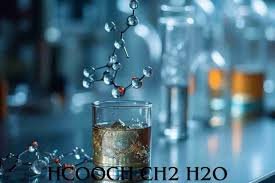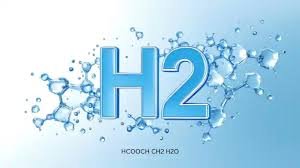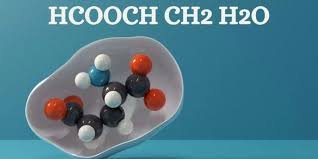In the world of organic chemistry, chemical notations such as HCOOCH CH2 H2O might initially appear confusing, but they represent real and important processes involving fundamental molecules. Whether you are a chemistry student, a researcher, or simply curious about molecular interactions, understanding the meaning and implications of this formula can enhance your knowledge of organic reactions and their relevance in daily life and industry.
This article will break down the keyword HCOOCH CH2 H2O, explain its components, explore the reactions it is associated with, and discuss its practical uses in modern chemistry. Throughout the article, we will use the keyword consistently and meaningfully, with a clear focus on human readability and chemical accuracy.
Table of Contents
What HCOOCH CH2 H2O Represents in Chemistry
The term HCOOCH CH2 H2O is not a standard IUPAC-recognized molecular formula but appears to represent a simplified shorthand notation for a combination of chemical components. When broken down, it contains:
- HCOOCH: Likely refers to methyl formate, which is an ester derived from formic acid (HCOOH) and methanol (CH3OH).
- CH2: A methylene group that plays a central role in hydrocarbon chains and chemical intermediates.
- H2O: Water, an essential reactant or product in many chemical reactions, especially in esterification and hydrolysis.
Putting this together, HCOOCH CH2 H2O may symbolically refer to either the formation or the breakdown of an ester molecule in the presence of water—a common reaction in organic chemistry.
HCOOCH CH2 H2O in Esterification Reactions

To better understand the importance of HCOOCH CH2 H2O, we must consider the process of esterification. Esterification is a chemical reaction between a carboxylic acid and an alcohol that produces an ester and water.
A classic example is:
Formic acid + Methanol → Methyl Formate (HCOOCH₃) + H₂O
In this case:
- HCOOCH stands for methyl formate.
- CH2 may be seen as a symbolic reference to the methanol structure.
- H2O is the water molecule released in the process.
Therefore, HCOOCH CH2 H2O effectively represents the system involved in ester synthesis, which is fundamental in making perfumes, synthetic flavors, solvents, and even plasticizers.
HCOOCH CH2 H2O and the Reverse Reaction: Hydrolysis
Just as esters can be formed, they can also be broken down. This process is known as hydrolysis, where an ester reacts with water to produce an alcohol and a carboxylic acid.
Methyl Formate + Water → Methanol + Formic Acid
In this reaction:
- HCOOCH is the ester again.
- CH2 can be attributed to the methyl group from methanol.
- H2O is the reacting molecule that drives the decomposition.
Thus, HCOOCH CH2 H2O can also refer to this hydrolytic process, highlighting the dual role of water in both creating and breaking down esters.
HCOOCH CH2 H2O in Industrial Chemistry
The significance of HCOOCH CH2 H2O goes beyond academic chemistry—it plays a major role in industrial applications. Methyl formate and related compounds are valuable in several sectors:
Solvents and Cleaners
Methyl formate is a fast-evaporating solvent used in the manufacture of quick-drying lacquers and coatings. Its relatively low toxicity compared to other industrial solvents makes it attractive for use in environmentally safer formulations.
Fragrance and Flavor Production
Esters like methyl formate are used as base ingredients in artificial flavorings and fragrances due to their fruity and sweet aromas. This aligns with the implications of HCOOCH CH2 H2O as part of ester synthesis and breakdown.
Polymer Manufacturing
Esters and related hydrocarbons, such as those involving CH2 groups, are precursors for polymer production. Polyesters, for example, are built from diacid and diol monomers, which undergo condensation reactions similar to esterification—again relating back to the HCOOCH CH2 H2O system.
Biological and Environmental Implications of HCOOCH CH2 H2O

In biological systems, reactions similar to HCOOCH CH2 H2O are responsible for the metabolism of fats, the breakdown of drugs, and the biosynthesis of various molecules. Enzymes called esterases catalyze the hydrolysis of esters in living organisms.
Environmental Degradation
Esters are typically biodegradable. The breakdown of synthetic esters in the environment can lead to the formation of alcohols and acids, which are less toxic. The water (H2O) involved in HCOOCH CH2 H2O ensures that these reactions proceed naturally in moist conditions, such as soil or water bodies.
The Role of CH2 in the HCOOCH CH2 H2O Formula
The CH2 group, although small, is vital in organic chemistry. It is a methylene bridge that connects different parts of molecules and can influence reactivity and stability. In the context of HCOOCH CH2 H2O, it may represent either a reactive site or part of an intermediate alcohol, such as methanol.
Methylene groups also appear in:
- Alkanes like ethane (CH3–CH3)
- Alkenes like ethene (CH2=CH2)
- Polymers like polyethylene
This group’s flexibility and reactivity make it a cornerstone of many organic compounds.
Laboratory Applications of HCOOCH CH2 H2O Reactions
In a lab setting, reactions involving HCOOCH CH2 H2O are used to teach core principles:
- Reaction Kinetics: How fast esters form and decompose under different conditions.
- Equilibrium: Demonstrating how adding more water or alcohol shifts the reaction balance.
- Spectroscopy: Monitoring ester formation or breakdown using IR or NMR techniques.
These reactions are fundamental in introductory organic chemistry courses and continue to serve as examples of dynamic molecular behavior.
Green Chemistry and Sustainable Trends
As the chemical industry moves toward sustainability, HCOOCH CH2 H2O becomes a perfect model for green chemistry. Consider the following:
- Renewable Feedstocks: Methyl formate can be synthesized from biomass-derived methanol and formic acid.
- Aqueous Reactions: Using water (H2O) as a solvent minimizes hazardous waste and eliminates the need for toxic organic solvents.
- Enzymatic Catalysis: Enzymes can catalyze esterification and hydrolysis under mild, energy-efficient conditions, making processes cleaner.
These advances are inspired by reactions exactly like those symbolized by HCOOCH CH2 H2O.
Also read Jumma Mubarak Pics with Dua for Peace
Conclusion: Why HCOOCH CH2 H2O Matters
While HCOOCH CH2 H2O might not refer to one distinct molecule, it encapsulates a series of related organic chemical processes—particularly those involving esters, hydrocarbons, and water. Whether through esterification, hydrolysis, or industrial synthesis, this formula acts as a conceptual anchor for understanding how small molecules interact in transformative ways.
In academia, industry, biology, and the environment, the elements of HCOOCH CH2 H2O appear in countless reactions that define the behavior of organic compounds. Learning about these components helps anyone interested in chemistry appreciate the elegant balance of molecules, bonds, and reactivity that make up the science of life and materials.







Got a Questions?
Find us on Socials or Contact us and we’ll get back to you as soon as possible.